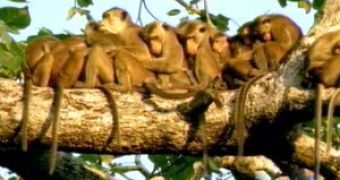The 2004 South Korean claim regarding human cloning proved false. Meanwhile, a team at the Oregon National Primate Research Center in Portland could have achieved the cloning of monkey embryos and the extraction of stem cells from them, a huge step towards human cloning.
The research could be published soon in the scientific journal Nature and could give much hope for patients waiting for a transplant tissue. Stem cells achieved from cloned embryos could generate all types of tissue, 100 % genetically identical with the owners', those not prone to immune rejection and this could be the step towards treating conditions from diabetes to spinal cord injury.
As monkeys are our closest relatives, their cloning comes with better clues of how to do it in humans. The results were first reported early in 2007 at an Australian scientific meeting by Shoukhrat Mitalipov of the Oregon National Primate Research Center. The team attempted to implant about 100 cloned embryos into the uteruses of about 50 surrogate rhesus macaque mothers but no clone offspring has been achieved, only dozens of embryos.
Cloning is made by inserting the whole DNA from an adult animal into an unfertilized egg whose DNA-containing nucleus has been removed. The egg develops into an embryo, from which stem cells can be collected. This destroys the embryo and here starts the ethic debate.
"To me, it's a breakthrough, showing it is possible. But we're still far off to start dreaming about translating this technique to humans. That's because the reported results were very inefficient, requiring many eggs to produce stem cells. Still, the work shows monkeys can be used to study the potential of embryonic stem cells produced through cloning," Jose Cibelli of Michigan State University told AP.
By now, through cloning, researchers have obtained whole animals, like Dolly the sheep, rather than stem cells. And it took 277 attempts to create Dolly! The new research would be the first to create viable cloned embryos from an adult primate (in this case, 10-year-old male rhesus macaque monkey).

 14 DAY TRIAL //
14 DAY TRIAL //